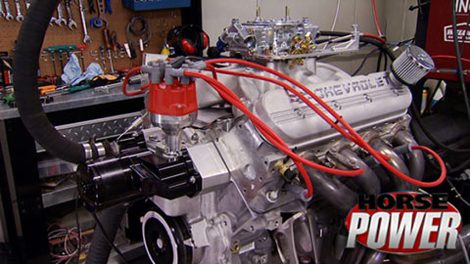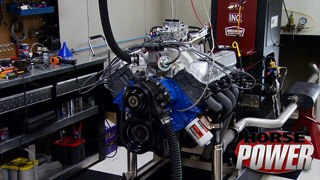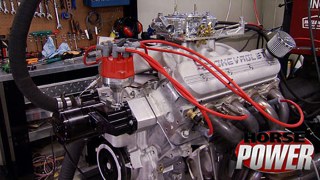More Ford 460 Big Block Episodes
HorsePower Builds
Want more content like this?
Join the PowerNation Email NewsletterParts Used In This Episode
ATI Performance Products
6.325" Steel shell Super Damper, LS1 Crank Pin Drill Fixture Kit.
Comp Cams
Mutha Thumper, 283THR7High Performance Street/Strip Camshaft., SB Chevy & GEN III/LS1/LS2/LS6 High Energy O.E.-Style Hydraulic Roller Lifters -Set Of 16., Pro Magnum Rocker ArmтДв Upgrade Kits; Gen III/LS1/LS6 1.85:1, 5/16" Pushrods, 1.75 Ratio., Keyway Adjustable Billet Timing Sets; GM Gen III (LS1/LS6)., Composite Distributor Gear.
Kooks Custom Headers
2 1/8" Primary 4" Collector Custom Dyno Headers with 02 bungs and Cobra Jet flanges.
Moroso
7 quart capacity, "Eliminator" Pan, Ford 429-4601979-95 Mustang and other Fox Chassis. Oil pump pickup and dipstick.
MSD Ignition
ProBillet distributor 351C-460, Black wire set universal 8.5mm Super Conductor.
Trick Flow Specialties
Trick Flow PowerPort Street/Strip Cylinder Heads for Ford 429/460. 72cc combustion chambers.
Trick Flow Specialties
Valve Covers, Tall, Fabricated Aluminum, Natural, Trick Flow Logo, Ford, Big Block.
Comp Cams
Custom grind hydraulic roller camshaft and lifters specs by Jon Kaase Racing Engines,Inc., Hi-Tech 3/8" Pushrods 8.20".
ITW Dymon
Machinist dye
Jon Kaase Racing Engines, Inc.
Custom spec grind camshaft, Double pinned camshaft and timing set, bronze thrust plate, modified oil pump.
Pace Performance
Front timing cover and cam distributor drive for carburetor conversion. Aluminum 4BBL Intake Manifold. Valve Covers and Hardware.
Power Tool Box
IQv Battery-operated hand tools, impact wrench, ratchet, drill driver, cut-off wheel.
Wegner Automotive Research
2.5" Water Pump spacers
































